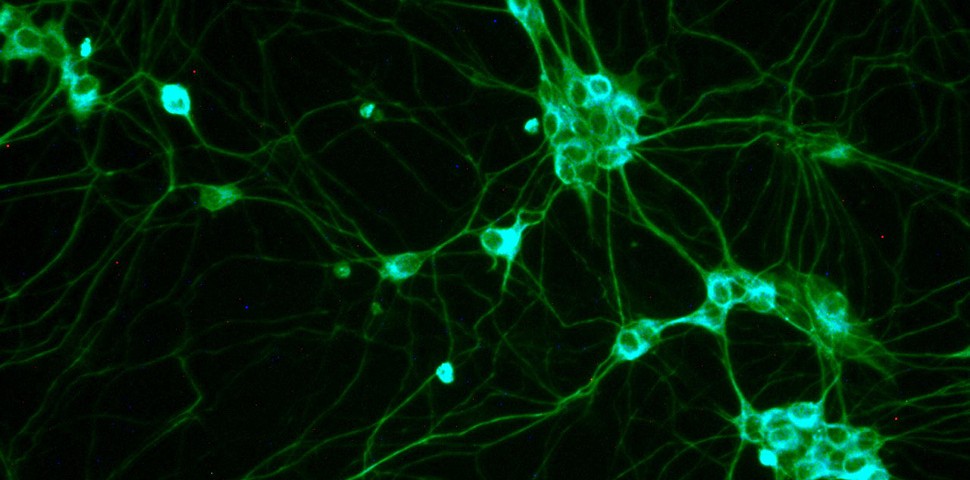The Cancer Diary: Chapter Ten – More Problems and Pep Talks
June 12, 2013The Cancer Diary: Chapter Eleven – We’re not in Kansas any longer
June 18, 2013Scientists may have discovered how cancer spreads around the body
Biologists at University College London say they now know why cancerous cells group together and spread to different parts of the body. And shockingly, it appears that the malignant cells are migrating by literally chasing healthy cells that are trying to get away.
Top image: Neural cells grown from a single neural crest stem cell taken from a 15-day-old rat. Photo credit: Genevieve Kruger, U-M Medical School.
Scientists already understood that malignant cells interact with healthy cells to move around the body during metastasis. The cancer cells recruit healthy cells and use them to travel long distances, resulting in a secondary tumor. But prior to this study, scientists weren’t entirely sure how this process takes place — or how this information could be used to develop new cancer fighting therapies.
The proposed mechanism is called chase-and-run — and it’s an apt description. By studying embryonic cells called neural crest cells (which have invasive properties similar to cancer cells) and placode cells (healthy cells that contribute to sensory organs) the researchers got a hint as to what might be going on.
The researchers, a team headed by Roberto Mayor, noticed that neural crest cells start to chase placode cells when they’re placed beside them. The placode cells produce a chemical attractant that the neural crest cells find irresistible (a process called chemotaxis involving PCP and N-cadherin signalling).
But not resigned to their fate, placode cells try to get away — what the researchers call escape behavior. Regrettably, it’s this escape behavior that then causes the invasive neural crest cells to move around the body, a process now known as directional collective migration.
Now, it’s important to remember that this is not cancer per se — but the researchers are confident that some cancers works according to this chase-and-run principle; healthy cells try to escape from tumor cells, only to be followed around the body by malignant cells.
“We use the analogy of the donkey and the carrot to explain this behaviour: the donkey follows the carrot, but the carrot moves away when approached by the donkey,” noted Mayor through arelease. “Similarly the neural crest cells follow the placode cells, but placode cells move away when touched by neural crest cells.”
The discovery could pave the way for alternative cancer treatments — future therapies that can work to disrupt the process of interaction between malignant and healthy cells.
And indeed, this would be important as most cancer deaths are not due to the rise of the primary tumor, but on account of secondary tumors originating from the first malignant cells.
Consequently, the researchers say it will be “relatively easy” to develop drugs that interfere with this interaction.
Well, nothing is easy in cancer research — but let’s hope this team is on to something.
It’s also worth noting that the mechanism does nothing to explain why the cancer arises in the first place.
Read the entire study at Nature Cell Biology: “Chase-and-run between adjacent cell populations promotes directional collective migration.”


